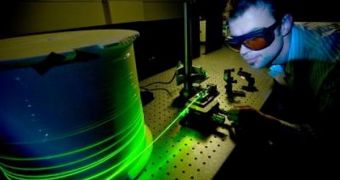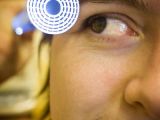At this point, optical fiber is able to focus beams of light into extremely narrow space. AS light travels through the wire, the latter gets narrower and narrower, until it finally reaches a thickness of only a few hundred nanometers. From that moment on – depending on the wavelength of the light itself – the focused beam begins spreading out again. This universal constraint is known as the diffraction limit and, in essence, refers to light being unable to fit into a space smaller than half its wavelength.
It would appear, however, that this limitation did not discourage researchers at the University of Adelaide, in Australia, who set out to break it. In their experiments, they realized that light could be focused into even smaller spaces, regardless of the limit's law. They took their research to such extent, that they not only managed to exceed the DL, but also managed to do so by two orders of magnitude. The achievement was made possible by a groundbreaking, new understanding of the behavior of light at the nanoscale, obtained through the use of a new generation of fiber optic cables, currently under development at the university.
“By being able to use our optical fibers as sensors – rather than just using them as pipes to transmit light – we can develop tools that, for example, could easily detect the presence of a flu virus at an airport; could help IVF (in vitro fertilization) specialists to determine which egg should be chosen for fertilization; could gauge the safety of drinking water; or could alert maintenance crews to corrosion occurring in the structure of an aircraft,” says professor Tanya Monro. She is the director of the UA Institute for Photonics and Advanced Sensing (IPAS), and also a Federation Fellow at the university.
IPAS Research Fellow Dr Shahraam Afsha, who also participated in the study, believes that the innovation could be used to create absolutely new light sources, as well as optical computers and telecommunications networks optical data processing equipment. According to professor Monro, Afsha's discovery is “a fundamental breakthrough in the science of light.”
“These breakthroughs feed directly into our applied work to develop nanoscale sensors, and they are perfect examples of the culture of research excellence that exists among our team members. They will enable us to study the applications of light at much smaller scales than we've ever thought possible. It will help us to better understand and probe our world in ever smaller dimensions,” she concludes.

 14 DAY TRIAL //
14 DAY TRIAL // 
